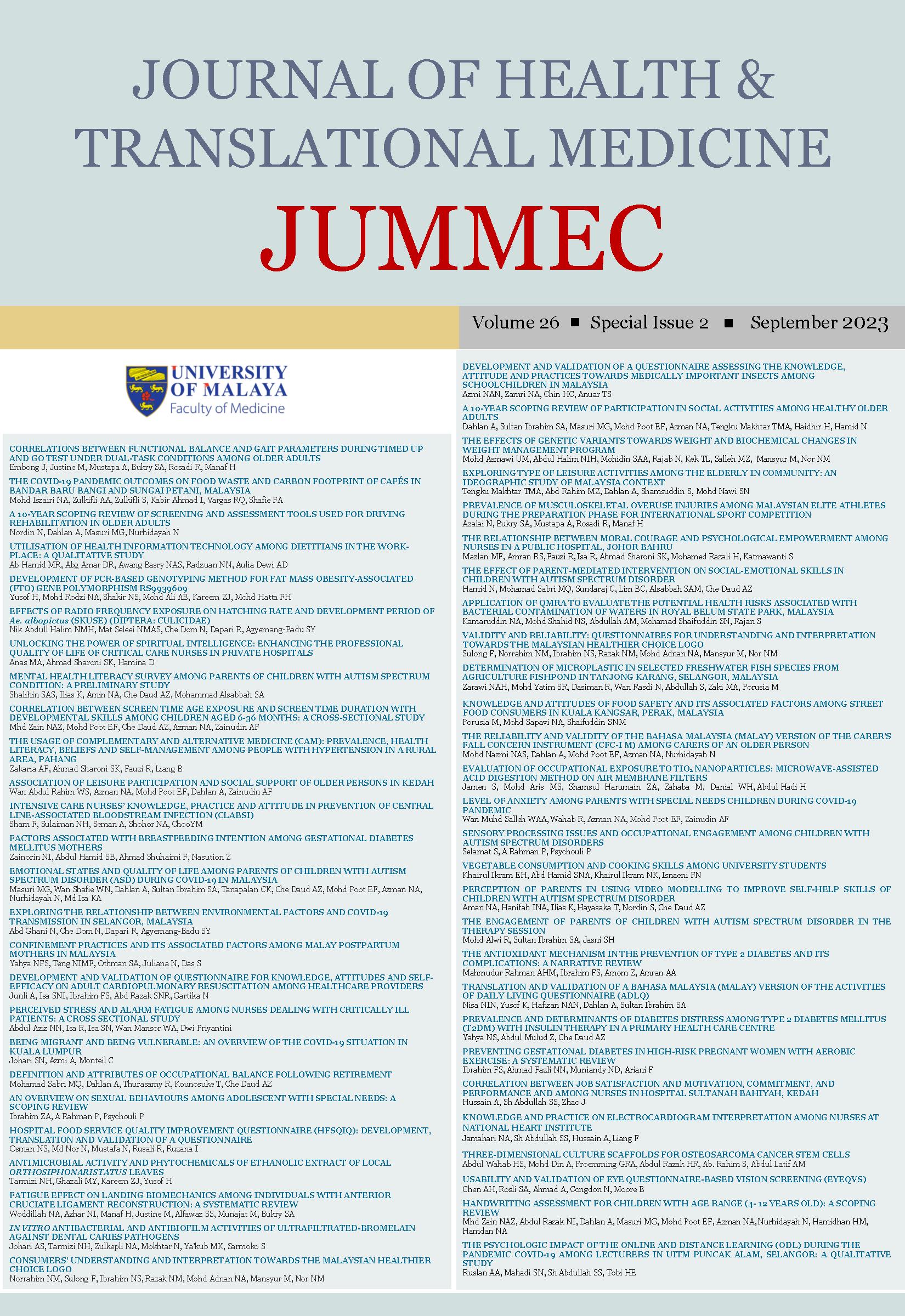ANTIMICROBIAL ACTIVITY AND PHYTOCHEMICALS OF ETHANOLIC EXTRACT OF LOCAL ORTHOSIPHON ARISTATUS LEAVES
Received 2023-07-12; Accepted 2023-09-07; Published 2023-09-15
DOI:
https://doi.org/10.22452/jummec.sp2023no2.23Abstract
The interest in drug discovery from plant sources has been the focus for many researchers due to the increasing emergence of drug-resistant microbial strains. This study investigated the antibacterial activity of Orthosiphon aristatus leaves and their phytochemical compounds against gram-positive (Streptococcus mutans, Staphylococcus epidermidis, and Propionibacterium acnes) and gram-negative bacteria (Escherichia coli and Klebsiella pneumoniae). The antimicrobial activity of the methanolic extract of Orthosiphon aristatus leaves was determined by using well diffusion assay, minimum inhibitory (MIC) and minimum bactericidal concentration (MBC). The extract showed inhibition against S. epidermidis, S. mutans, P. acnes and K. pneumoniae, ranging from 9 mm to 30 mm. E. coli was not inhibited. The MIC and MBC values for S. mutans were 7.81 mg/ml, S. epidermidis were 125 mg/ml, P. acnes were 3.91 mg/ml, and K. pneumoniae were 62.5 mg/ml. Data analysis showed that S. mutans, P. acnes, and K. pneumoniae had no significant mean difference between the plant extract and the corresponding antibiotic, while S. epidermidis showed statistical significance. Qualitative phytochemical tests showed the presence of glycosides, flavonoids, alkaloids, saponins, tannins, phenolics, and terpenoids in the extract. The findings indicate Orthosiphon aristatus as a promising antimicrobial agent.
Downloads
Downloads
Published
Issue
Section
License
All authors agree that the article, if editorially accepted for publication, shall be licensed under the Creative Commons Attribution License 4.0 to allow others to freely access, copy and use research provided the author is correctly attributed, unless otherwise stated. All articles are available online without charge or other barriers to access. However, anyone wishing to reproduce large quantities of an article (250+) should inform the publisher. Any opinion expressed in the articles are those of the authors and do not reflect that of the University of Malaya, 50603 Kuala Lumpur, Malaysia.


